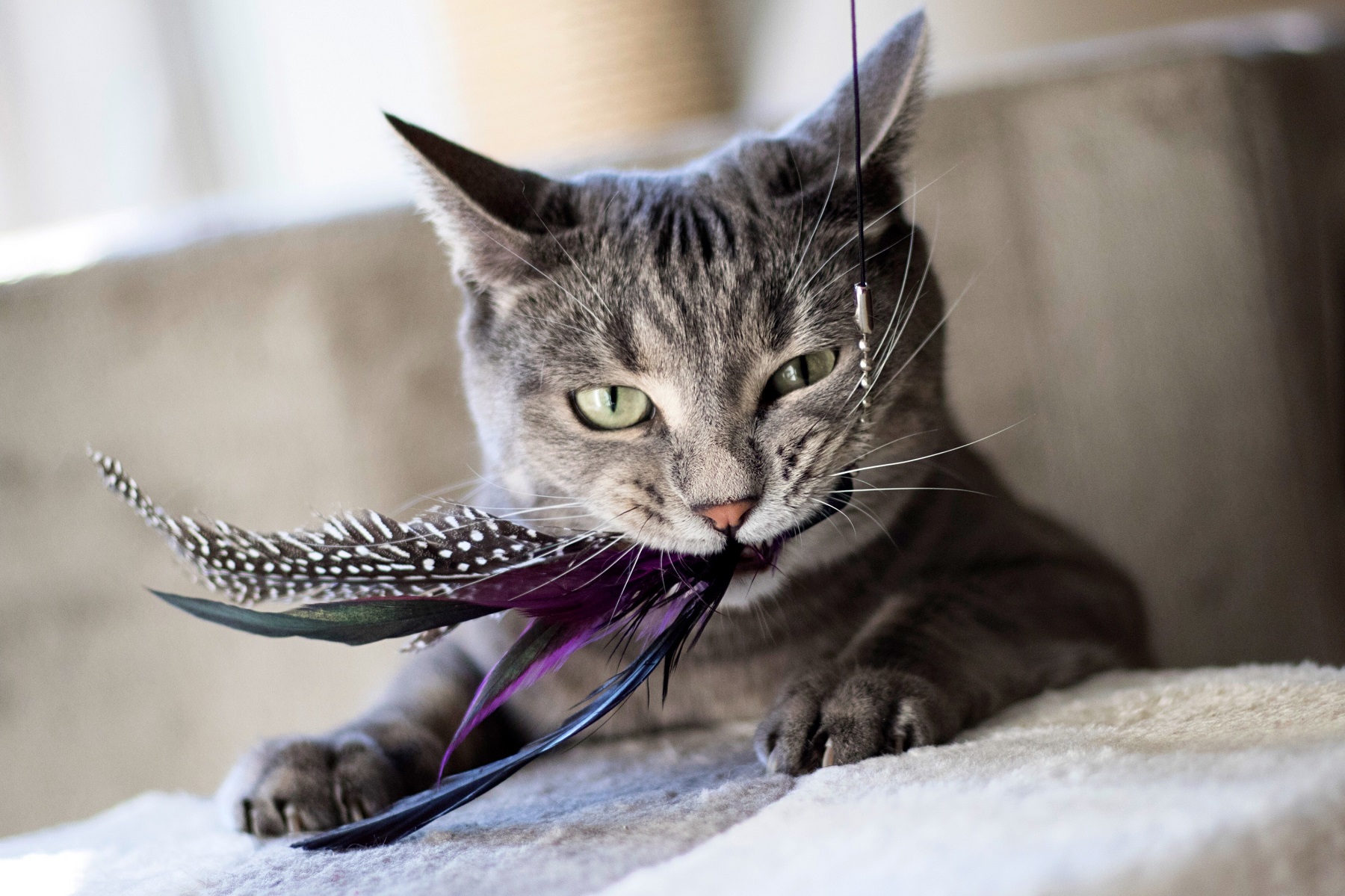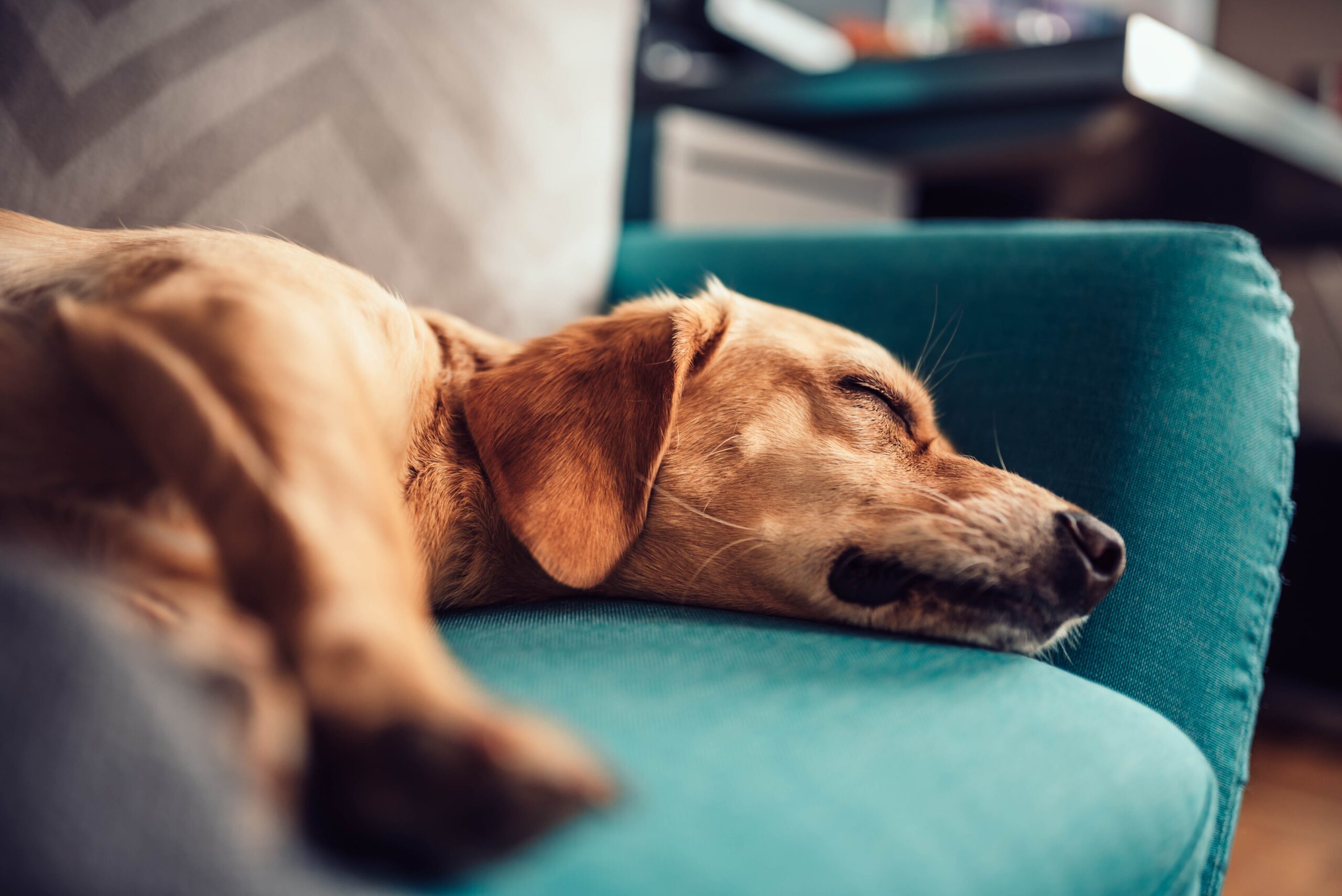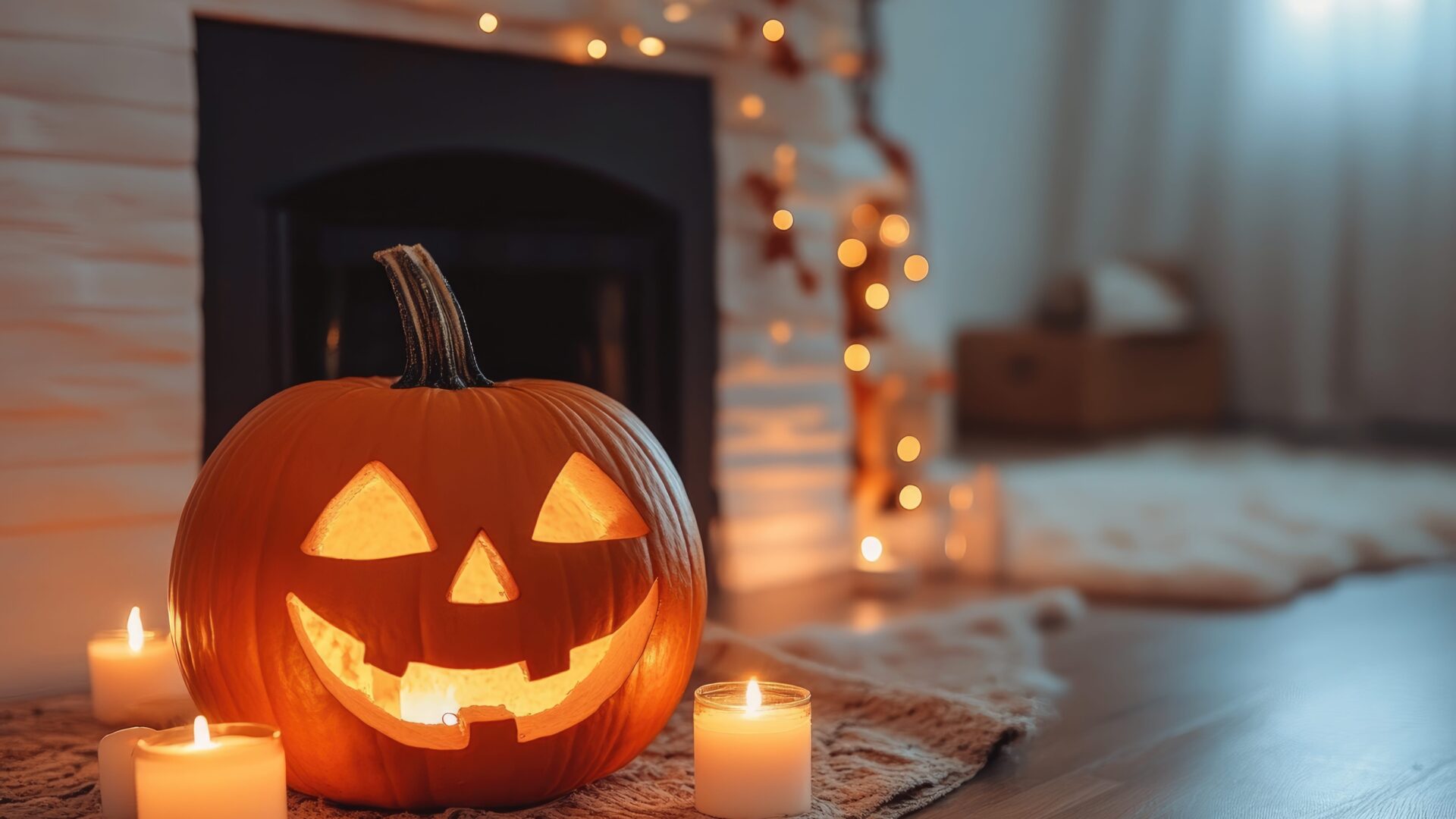Updated: 30/10/25
While Halloween may be an exciting time for us humans, it can prove stressful and overwhelming for our pets – especially if there is an endless stream of trick-or-treaters at the door!
To help make this time of year a little less stressful for our furry friends, we have put together our top tips for managing the season’s spooky visitors.
On this page:
- Get ahead of the action
- Keep calm and carry on
- Prevent accidental escapes
- Leave treats outside (and out of reach)
- Think twice about creepy costumes
- Beware spooky decorations
1. Get ahead of the action
Trick or treaters typically come calling in the evening, so make sure that your pet is safe and sound indoors before you start expecting visitors.
Walk your dog during the daytime and take them out to go to the toilet while it is still light outside.
If you have a cat, you could encourage them to come home earlier by giving them their dinner earlier in the day.
If you plan on shutting their cat flap for the evening, just make sure that you have a bed and litter tray inside for them, somewhere they won’t be disturbed.
2. Keep calm and carry on
During any busy time of year or period of change, it is important to provide your pet with a safe hiding place at home where they feel safe and comfortable.
For dogs, why not try making a den by placing a blanket over their crate? Cats might like to hide under a bed or somewhere high up and cardboard boxes can make great hideaways.
Shutting windows and curtains, as well as creating background noise by having the TV or music on can help to block out any noises coming from outside.
If your pet is up for it, you could also keep them distracted with games, puzzle feeders or healthy treats. However, don’t force it if your pet is not in the mood to play. Just be there to comfort and support them.

3. Prevent accidental escapes
The constant ringing of the doorbell can be stressful and triggering for some pets, especially dogs.
Frequently opening the front door can also increase the risk of pets escaping, so take care to avoid this and keep exits and cat flaps secured.
Microchipping is a safe and legal requirement for cats and dogs, and means that they can be easily returned to you if they do escape or get lost.
Just remember to make sure you update the microchipping database if you change your address or phone number.
If it is suitable for your pet, wearing an ID tag on their collar can also be helpful.
4. Leave treats outside (and out of reach)
To prevent constant doorbell ringing and commotion, you could leave a closed container of treats outside your front door, alongside a note letting trick or treaters know that they can help themselves to one each.
Not only does this help to limit noise and disruption at home, but it also means that sweets and chocolate, which can be toxic to pets if eaten, are kept out of reach.
If you think your pet has eaten anything they shouldn’t have, please contact your veterinary practice straight away.

5. Think twice about creepy costumes
Every pet is different, and while some are happy to participate in the Halloween festivities by wearing costumes, it might not be to every pet’s liking. For this reason, it’s best to avoid anything that could make them uncomfortable or distressed.
The same goes for people – keep your pet away from your front door if trick or treaters dressed up for Halloween could spook them. They may not realise that it is just a neighbour or a child dressed up!
6. Beware spooky decorations
If you’ve carved a pumpkin and want to put it outside or in a window, make sure it is safely out of reach from your pet.
Candles and tea lights can be a fire risk, so ensure that any flames are kept on a stable surface and away from pets.
For further advice on keeping your pet safe this season, please contact your local VetPartners practice.
Did you find this article useful? Why not take a look at…
- Keeping your dog or cat safe at Halloween time
- How to calm your anxious dog during firework displays
- Tackling bonfire night with anxious pets

